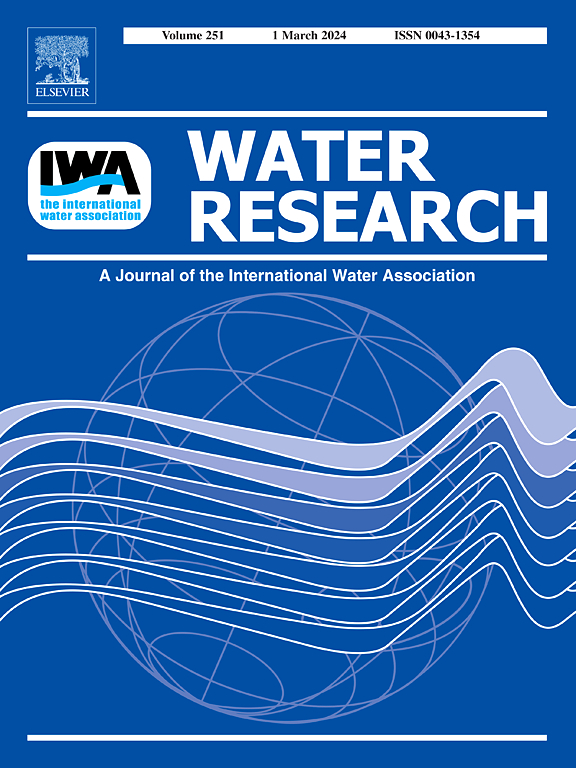Identifying groundwater anthropogenic disturbances and their predominant impact on microbial nitrogen cycling at a former contamination site adjacent to Baiyangdian Lake
IF 11.4
1区 环境科学与生态学
Q1 ENGINEERING, ENVIRONMENTAL
引用次数: 0
Abstract
Groundwater ecosystems face increasing threat from declining water quality due to intensified urbanization, agricultural, and industrial activities. Accurately identifying anthropogenic disturbances remains challenging, and their effects on microbial nitrogen cycling are still largely unknown. Here, by collecting 64 groundwater samples from an aquifer beneath the Tanghe sewage reservoir in the North China Plain, we conducted a full-spectrum screening of 228 physiochemical indices, 47 nitrogen cycling genes (NCGs) and 2,182 metagenome-assembled genomes (MAGs) harboring NCGs. Unmix model identified antibiotic usage, industrial manufacturing, and agricultural practices as the predominant pollution sources, explaining 49.6% - 92.2% (averaged 81.0%) of the variations in aquifer attributes. These activities were primary drivers governing distributions of groundwater NCGs and NCG-hosts, with fragmented denitrification processes being prevalent. Antibiotic usage and industrial activities were probably associated with suppressed nitrogen cycling, while agriculture had a positive effect. Notably, we observed enhanced mutualistic interactions within NCG-hosts and increased enrichment of NCG-antibiotic resistance gene (ARG), NCG-mental resistance gene (MRG), and NCG-ARG-MRG co-hosts under high anthropogenic stresses, suggesting microbial adaptation to optimize nutrient and energy metabolism. This study provided new insight into how groundwater nitrogen cycling responds to anthropogenic disturbances, offering valuable information for developing groundwater management and pollution control strategies.

求助全文
约1分钟内获得全文
求助全文
来源期刊

Water Research
环境科学-工程:环境
CiteScore
20.80
自引率
9.40%
发文量
1307
审稿时长
38 days
期刊介绍:
Water Research, along with its open access companion journal Water Research X, serves as a platform for publishing original research papers covering various aspects of the science and technology related to the anthropogenic water cycle, water quality, and its management worldwide. The audience targeted by the journal comprises biologists, chemical engineers, chemists, civil engineers, environmental engineers, limnologists, and microbiologists. The scope of the journal include:
•Treatment processes for water and wastewaters (municipal, agricultural, industrial, and on-site treatment), including resource recovery and residuals management;
•Urban hydrology including sewer systems, stormwater management, and green infrastructure;
•Drinking water treatment and distribution;
•Potable and non-potable water reuse;
•Sanitation, public health, and risk assessment;
•Anaerobic digestion, solid and hazardous waste management, including source characterization and the effects and control of leachates and gaseous emissions;
•Contaminants (chemical, microbial, anthropogenic particles such as nanoparticles or microplastics) and related water quality sensing, monitoring, fate, and assessment;
•Anthropogenic impacts on inland, tidal, coastal and urban waters, focusing on surface and ground waters, and point and non-point sources of pollution;
•Environmental restoration, linked to surface water, groundwater and groundwater remediation;
•Analysis of the interfaces between sediments and water, and between water and atmosphere, focusing specifically on anthropogenic impacts;
•Mathematical modelling, systems analysis, machine learning, and beneficial use of big data related to the anthropogenic water cycle;
•Socio-economic, policy, and regulations studies.
 求助内容:
求助内容: 应助结果提醒方式:
应助结果提醒方式:


